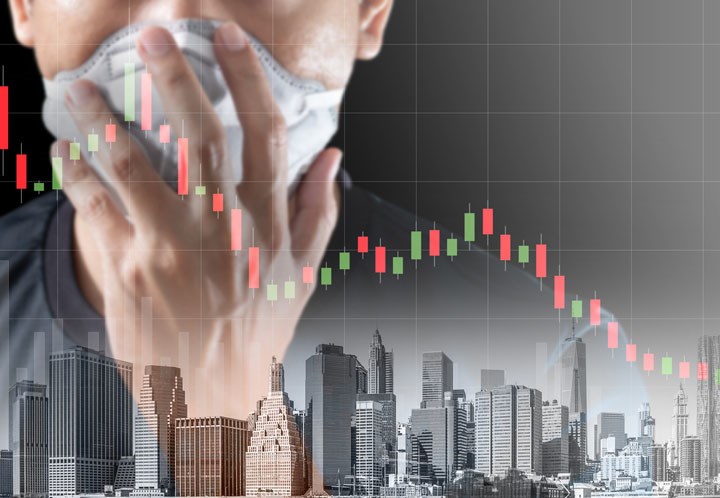What is market cap or market capitalisation?
Also known as market cap or m cap, market capitalisation is one of the ways to calculate the value of a listed company. It represents the total value of a company based on the current market value of its stocks.
How to calculate market capitalisation?
Now that you know what is market cap, the following is the formula to calculate the m cap of a company,
MC = N x P
where,
MC is for market capitalisation
N is the number of outstanding shares
P is the current market price per share
Let’s calculate the market cap for XYZ Co. It has 10 lakh shares of market value Rs 10 per share. As such, the m cap of XYZ Co. is Rs 100 lakh.
You can also use the market cap method of valuation to value a stock exchange. As per Wikipedia, NSE had a total market capitalisation of over $2.27 lakh cr as of Apr 2018.
What is free-float market capitalisation?
The market cap of listed companies considers the total outstanding equity shares—the total number of shares—issued by a company. These include shares held by the promoters, management, employees of the company, institutional investors, and the public. Of these, the equity held by investors other than the public is called ‘restricted shares’, which can’t be traded by the public.
On the other hand, the shares held by the public are called free-float stocks because these can be traded on the bourses without restrictions. Depending on the shares available for the public, a company can have low or high free-float stocks.
So, the point we driving home is that market cap considers the total equity of a company, irrespective of who holds it. This means you can’t ascertain how liquid a stock is. To overcome this shortcoming of the market cap method of valuing a company, a called free-float market cap was introduced. This method considers only the free-float stock of a company however excludes shares owned by the entity’s executives.
Categories of market capitalisation
There are three types of market cap:
- Largecap
- Midcap
- Smallcap
Categories of companies based on market cap
Based on the market capitalisation of an entity, listed companies in India are broadly classified into 3 categories. The stocks issued by such companies are also categorised accordingly.
Smallcap companies
These are relatively newer or younger companies that may have recently been listed on the stock market. Since these are fairly new in their industry and the market, smallcap companies are risky and have lesser financial resources and smaller balance sheets. These features make them highly volatile and relatively more vulnerable to economic turmoil.
Fortunately, their newness gives smallcap companies a bigger room for growth, which is why they have the potential to become more profitable with time. But if they fail, they would do so equally badly.
Stocks issued by smallcap companies are called smallcap stocks.
Midcap companies
These listed companies are matured when compared to smallcap businesses and so have relatively lesser potential to grow. However, midcap companies are more stable than smallcap businesses, which makes them less risky. But this is not true in all cases.
Some midcap businesses face the challenge of beating competition from largecap companies in order to survive. Moreover, some midcap companies may have formerly been largecap businesses that couldn’t weather economic conditions and lost to their competitors. Yet others may be operating in a smaller niche and have little growth prospects.
Stocks issued by midcap companies are called midcap stocks.
Largecap companies
Among all three categories, largecap companies are the most matured, which leaves relatively the least scope for growth. As such, the returns of these businesses are also lower than the midcap and smallcap companies. Typically, largecap companies are market leaders because they may have overcome tough economic and market conditions and emerged stronger. These features also make largecap companies less risky and the most stable of all.
Largecap companies have larger balance sheets and ample financial resources, which make them better positioned to survive an economic downturn. Generally, largecap companies generate more cash than what’s necessary for their business and so distribute it as a dividend to investors. That’s why you can find the best dividend stocks in largecap companies.
Stocks issued by largecap companies are called largecap stocks.
Table of difference between largecap, midcap, and smallcap companies
| Criteria | Smallcap | Midcap | Largecap |
| Risk | Very high | High | Low |
| Return | Very high | High | Low |
| Stability | Low | High | Very high |
Which stocks should you have in your investment portfolio?
After familiarising yourself with the types and features of listed companies based on market cap, you may be wondering stocks of which category(ies) you should include in your investment portfolio. Well, the answer is to have a diversify your portfolio. Doing this would help minimise the risk.
When doing so, invest in a combination of smallcap, midcap, and largecap stocks based on these factors:
- Goals
- Risk appetite
- Return expectation
For instance, if you are looking to invest for retirement, you can consider investing a larger portion of your portfolio in largecap stocks as they are stable. On the other hand, if you can stomach high risk and are looking to create wealth over years, you can consider allocating the majority of funds in smallcap and midcap stocks.
Shortcomings of market cap as a method to evaluate a company
Though the market cap of a company indicates the risk associated with its stock and potential returns it can generate, this method is not versatile. This is mainly because the market capitalisation is influenced by various factors:
- Demand for a company’s products and the ability to meet it
- Fluctuations in the market
- Reputation and reliability of a company
- Change in the stock prices
- Exercising the warrant on stocks
- Performance of competitors
- Change in the number of outstanding shares due to buyback of shares, issuance of new and bonus shares
Alternative to value a company: Enterprise value
Since market cap only considers the equity value of a company, the method doesn’t show a fair picture of the entity. Ergo, some investors use the ‘Enterprise value’ to evaluate an entity. This method not only considers the market cap of a company but also its short- and long-term debts, which shows a truer picture of an entity. Here’s the formula.
EV = MP + D – C
Where,
Enterprise value = EV
Market cap = MP
D = Short- and long-term debt
C = cash and cash equivalents, liquid assets of a company but not marketable securities
NSE indices based on the market cap
Following is a list of NSE indices based on the m cap:
Nifty 50
This is a diversified index that accounts for stocks of top 50 Indian companies listed on NSE belonging to 13 sectors of the market. Nifty 50 represents the performance of the broader market
Nifty 100
This index represents the top 100 listed companies based on the full market cap from Nifty 500 and represents the performance of largecap stocks. The Nifty 100 tracks the combined performance of Nifty 50 and Nifty Next 50
Nifty Next 50
This index represents the 50 companies of Nifty 100 that are excluded in the Nifty 50
Nifty 200
This index reflects the performance of largecap and midcap stocks. It includes stocks of Nifty 100 and Nifty Midcap 100 indices
Nifty 500
This represents the top 500 NSE-listed companies that are selected based on the full market capitalisation from the eligible universe
Nifty Midcap 50
Captures the movement of the stocks of the listed companies in the midcap segment of NSE. Nifty Midcap 50 represents the top 50 Indian companies listed on NSE based on the full m cap from Nifty Midcap 150 index
Nifty Midcap 100
Represents the movement of 100 midcap companies
Nifty Smallcap 100
This index tracks the behaviour of 100 smallcap stocks
Nifty Midcap 150
This represents the next 150 stocks (of companies ranked 101-250) based on the full market capitalisation from Nifty 500. This index measures the performance of midcap companies
Nifty Smallcap 50
This tracks the smallcap segment. The Nifty Smallcap 50 represents the top 50 Indian companies listed on NSE selected based on the average daily turnover from the top 100 stocks selected based on the full market cap in Nifty Smallcap 250 index
Nifty Smallcap 250
The index represents the remaining 250 listed companies (ranked 251-500) from Nifty 500 index. Nifty Smallcap 250 tracks the performance of smallcap companies
Nifty Midsmallcap 400
This reflects the behaviour of the midcap and smallcap stocks. The Nifty Midsmallcap 400 index includes companies belonging to Nifty Midcap 150 and Nifty Smallcap 250 indices
Source: NSE
Conclusion
Now that you know what is market capitalisation and how listed companies are classified based on the same, it is time to do your homework and plan your investments smartly. Most financial advisors swear by one rule of investment–diversification. It is recommended that you don’t park all your funds in:
- Large-cap stocks to dodge risks
- Midcap stocks to be average returns
- Smallcap to earn high returns at the cost of high risk
Instead, analyse your risk appetite, return expectation, and goals before investing in stock(s) of largecap, midcap, and smallcap companies. As mentioned before, diversifying your investments is the best way to optimise your returns.









